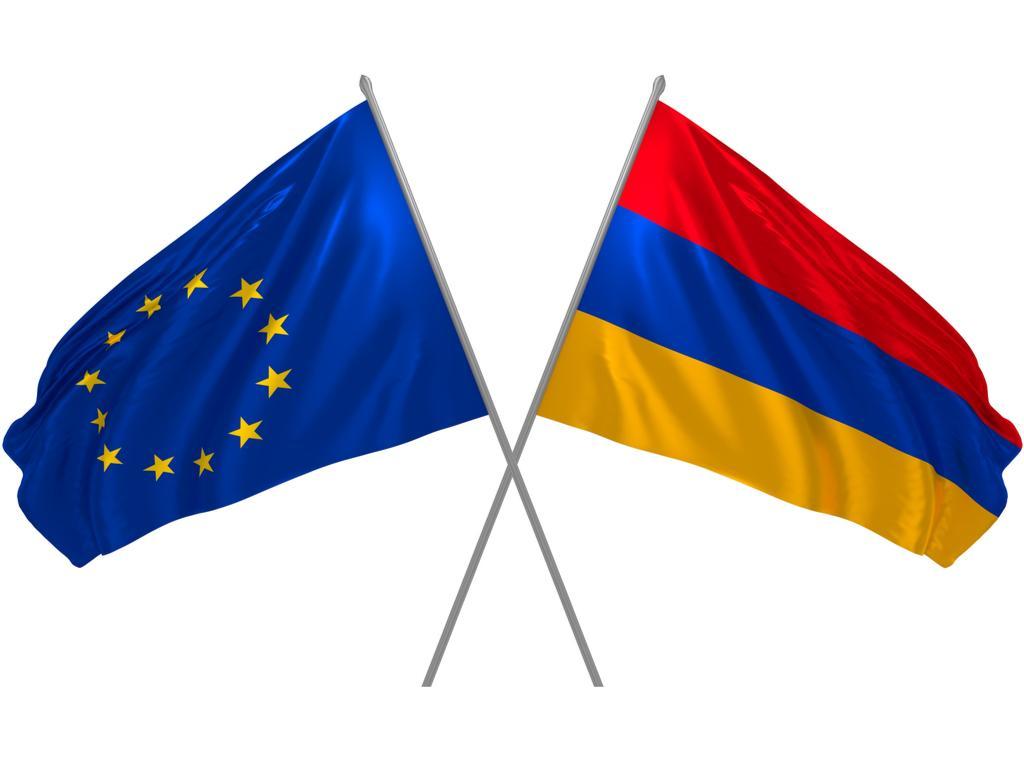Heghine Aleksanyan, Coordinator of the Analytical Forum, Enlight Public Research Center (Armenia)
The European Parliament intends to call for the creation of a new common economic space between the EU and the countries of the Eastern Partnership, according to a draft report leaked in April. The move aims at “gradual integration” of the EaP countries to the bloc. StrategEast has asked leading non-governmental organizations and experts from Eastern Partnership countries to find out what are the implications of such a move for each country’s economy. Here are the answers from the expert on Armenia.
2009 marked the year of creation of the EaP: joint policy initiative launched to deepen relations between the European Union and the six Eastern neighbors: Armenia, Azerbaijan, Belarus, Georgia, the Republic of Moldova and Ukraine. EaP is also a specific dimension of the European Neighbourhood Policy where besides political or security objectives trade relations are also intended to play an important role to promote economic growth and stability in countries bordering the EU. These refer also to the EU’s eastern neighbors including the Republic of Armenia.
Despite disagreements over the extent to which expectations of partners were met last decade of cooperation helped to create the necessary conditions for accelerating political association and further economic integration between the European Union and interested EaP countries. Of course, at the same time, each of the EaP countries have experienced various degrees of change in their domestic politics and foreign policy orientations. It will be fair to say that the EU’s common approach to EaP countries was challenged from the beginning. Not only because of differences between the six countries but also because of the geopolitical context. This point is also reflected in the draft report which confirms the sovereign right of the EaP countries to freely choose their level of cooperation or integration with the EU.
Currently, Armenia is a member of the Eurasian Economic Union (EEU). From this perspective, the EU appears as the main economic alternative to Russia and EEU, because of its geographical proximity and its unique market. Although Russia continues to be Armenia’s main trade and investment partner. Since 2018, Armenia has a Comprehensive and Enhanced Partnership Agreement with the EU which mainly clarifies the areas of potential cooperation that are compatible with Armenia’s new commitments deriving from its participation in the Eurasian Economic Union. EEU is currently in the development process with many changes yet to come as the union also aims to harmonize/align standards in a wide variety of fields and like the EU envisages free movement of goods, services, persons and capital.
On the other hand, unlike the EU’s founding treaties, the EEU Treaty does not call for ‘ever closer union’, nor does it invoke shared values. Thus these differences and controversial nature in EU and EEU policies will be one of the biggest challenges for Armenia in terms of the potential level of integration in EU-EaP “common economic space”. The level of ‘integration’ of RA will be conditioned with Armenia’s membership in the Eurasian Economic Union. At least, for now, the membership of RA in the customs union means accepting joint EEU external tariffs and losing the freedom to conclude members’ own trade agreements.
Besides that, the security issues and frozen conflict between Armenia and Azerbaijan remain an obstacle to stability and prosperity in the region. This means that Armenia’s steps of “integration” will be determined or maybe “limited” with carefulness towards security challenges in the region.
Considering the fact that EU-Russia relations took a sharp turn for the worse during the past decade and Russia’s dominance in the EEU, these factors could be also an obstacle to closer integration for Armenia, especially when taking into account that EEU is not only an economic union but also has geopolitical significance.
Except for country-specific challenges, there are also common issues that need to be determined by EU and EaP countries.
First of all, the extent to which each of the six countries aspires and how much and what kind of cooperation, assistance the EU can offer will be a determining factor for the creation of EU-EaP common economic space.
The second challenge for the creation of common economic space is the differences between the six partner countries which do not seem to diminish over the past 10 years. They are partly linked to their geographic and economic situation but are also an expression of their perceived identity and vision of the future.
The creation of “common economic space” between the EU and EaP countries itself is a courageous step considering the diverse nature and inner social and political characteristics, security challenges, conflicting interests, and the role of EEU and Russia in the region. However, the past achievements and experience of the Eastern Partnership program, the common ground it has created for the partner states (countries will work together on long-term policy objectives: resilient, sustainable and integrated economies; accountable institutions, the rule of law and security; environmental and climate resilience; etc.) make the suggested draft on creating common economic space realistically.




